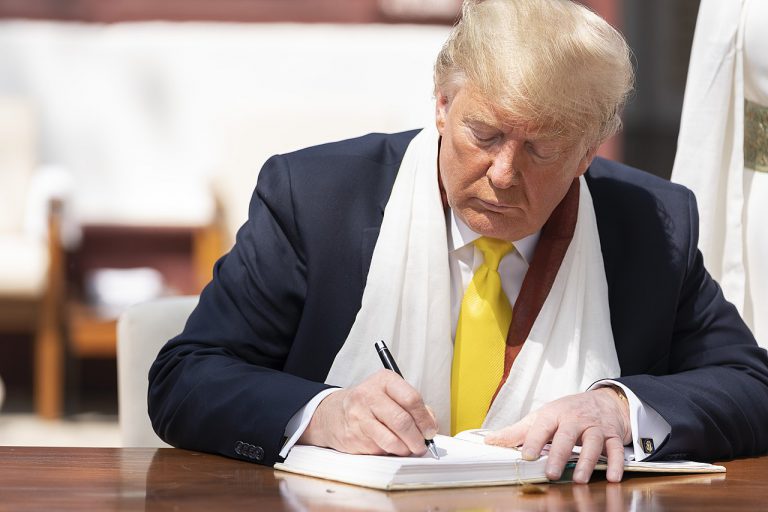The void in India’s environment regulation
Student, M.A. in Public Policy, Jindal School of Government and Public Policy, O. P. Jindal Global University
Abstract
The 2021 COP26 Summit witnessed PM Modi pledging net zero carbon emissions by 2070. While these ambitions and pledges are highly appreciated, there is more to the environment than just carbon emissions. Unlike the usual political motives that affect a few, changes in the environment affect all. But the government, and the opposition, fail to raise concerns of the same magnitude around and about it. From easing environmental clearances to reducing the number of independent members in the National Board for Wildlife and to the Central Pollution Control Board allowing thermal power plants to release pollutants in violation of the 2015 limits (set by the government), the issue at hand is very serious. It comes as no surprise that 22 of the world’s out 30 most polluted cities are in India. The National Green Tribunal too finds a loss of strength since in the past few years, the appointment of both judicial and expert members to the green body is pending. This research aims to put forth how, and where, our comprehensive, yet insufficient environmental legislations limit, and what is its impact on the lives of people.
Introduction
While the past few decades have seen an unprecedented rate of development for India, much in the name of urban modernization & infrastructure growth, there also has been an under-reported exponential harm to nature. The motivation of shaping interaction with surroundings and the lifestyle comes at the cost of environmental issues that jeopardize not just the country’s development but also its future perspective (Saheb et. al, 2012). This infrastructural growth often renders a blow, overshadowed by development, to the wildlife and communities over which it is built. The success stories of fancy complexes, dams, highways, and more sophisticated forms of concrete are also accompanied by the murderous stories of wildlife, communities, culture, and other forms of life. Yet the media, politics, and our eyes, are usually more happy than sad.
Unlike the usual political motives that affect a few, changes in the environment affect all. But the government, and the opposition, often fail to raise concerns of the same magnitude around and about it. From easing environmental clearances to reducing the number of independent members in the National Board for Wildlife and to Central Pollution Control Board allowing thermal power plants to release pollutants in violation of the 2015 limits (set by the government), the issue at hand is very serious. It comes as no surprise that 22 of the world’s 30 most polluted cities are in India (The Print, 2021). Through my research, I intend to present my findings on the identification of the void in the environmental laws in India and would also highlight what is being filled in the place of this void.
Background
The basis of environmental laws and policy is laid within the constitution itself, from the Directive Principles of State Policy (DPSP) to Fundamental Duties and Fundamental Rights ensured to every Indian citizen. Further, environmental legislation, like the National Green Tribunal (NGT) Act, 2010, clearly places emphasis on the principle of sustainable development, the concept of ‘polluter pays’, and the precautionary principle (Sidhu & Rathi, 2021). Furthermore, the Ministry of Environment, Forest & Climate Change (MoEFCC) together with the Central Pollution Control Board as well as the State Pollution Control Boards of all the states and Union Territories control and implement the laws and regulations pertaining to the environment. Despite these, and many other, comprehensive and elaborate provisions, legal and otherwise, the existing environmental laws and policies in the country are often unable to produce the intended results.
The issues of environmental negligence are profound across the Indian subcontinent. From the cities shrouded in thick toxic smog to the rural areas losing, or drowning, in their waters, the impact of this void in the environmental laws and policies is affecting the Indian population, and wildlife, at an alarming rate.
The Issue
India is witnessing an expeditious rate of growth, economic and industrial, over the past few decades, and, simultaneously, a poorer quality of its air and water. While a polluted environment affects everyone who lives in it, it has a profound effect on the rates of life expectancy and infant mortality (Striessing, Schbpp, & Amann, 2013). Although the country has made many efforts to improve its air and water quality, the results have not been very positive. The inefficiency of the setup is a result of the substandard institutional settings and insufficiency of implementation of the regulations (Chandra, 2015).
Though the issue of the environment, at large, is global, every nation has control over its environment via its territorial jurisdiction. The role of every nation, as an individual entity responsible for regulating its environment, makes implementing global statutes arduous. It has been seen that international organizations and Non-Governmental Organisations (NGOs) working towards environmental issues, especially pertaining to human rights standards, find it difficult in having overlapping interests (Randeria, 2003).
The new notification on Environment Impact Assessment (EIA), 2020 does not reinforce the governing processes and institutional machinery. The national level Expert Appraisal Committee (EAC), and those at the state level, function in an ad-hoc manner, without much bureaucratic extent, and have often found questions on their competence (Prasad & Menon, 2020). The legal environmental framework of the country still misses an independent regulator for environmental matters. Though the new EIA regulations put a mandate for the big industrial and/or infrastructural projects to scrutinize their environmental impact before applying for clearance approval from the MoEFCC, it also raises controversies by allowing the entities running the project to choose their EIA consultant. The new EIA proposal fails to sufficiently address the issues of the climate crisis and overutilization of resources (Naik & Joisa, 2020).
Despite the many provisions aiming to strengthen the environmental laws and policies in India, they also fail because of their non-compliance by the population at large and the implementation crisis. Since there is no independent regulatory body to govern environmental issues, MoEFCC looks after the area. The ministry, being a part of the governmental and dynamic political structure, falls prey to an uncontrolled political intervention, leading to sabotaging of the environmental laws (Dahiya, 2018).
The lack of political will further render the many laws and committees on the environmental sphere ineffective. The central government’s new ordinance to tackle pollution in the National Capital Region (NCR), along with the neighboring areas, provides for the setting up of a Commission for Air Quality Management. The composition of the commission is majorly that of the government officials and raises concerns about it falling prey to a dead political motivation. Experts believe that the fight against the issue of pollution in the NCR is not a result of lacking laws or authoritative bodies, but due to a lacking political motivation (Roy, 2020).
Despite the dynamic and evolving environmental legislative capacity of the country, the ongoing environmental crisis finds no end. The increasing particulate pollution, unhygienic discarding of solid waste, mixing of untreated sewage and hazardous chemicals into the river streams, the increasing dependence and usage of chemical fertilizers and pesticides along with the modern menace of plastic and electronic wastes are simply degrading the environment (Sawhney, 2018). The state of the environment is harming not just humans, but all forms of life. The gloomiest, and perhaps the most questionable, matter of concern here is that for every environmental issue discussed, there are multiple legislations/policies in a place governed by multiple institutions and bodies. Yet the smog curtains only vividly show the realities of a lethal, unhealthy, toxic environment gasping for breath.
The Impact
A lacking national-level legislation and a reduced budget highlight the lessened weight of the issue for the government (Guttikunda, 2021). As per the 2021 Lancet report, 1.67 million deaths in India, for the year 2019, could be attributed to air pollution alone. As per the Council on Energy, Environment, and Water, despite launching the National Clean Air Programme (NCAP), the plans, created and aimed at city levels, lack specific objectives and priorities. The NCAP further misses having a legal directive and any mandate for execution based on a timeline. The lacking political will to strengthen the already existing many laws and policies is costing citizens their health, and life. If the country could attain and reduce pollution levels by just one-fourth, it would add 1.6 years to the national life expectancy (Tripathi, 2020).
The rapid growth of the urban centers has not just deteriorated the air but the waters too. It is estimated that 70% of the surface water resources are contaminated in the country (Hirani & Dimble, 2019). The cost of degrading the environment is economic as well. A degraded environment costs the Indian economy $80 billion annually. The country’s inability to utilize the environmental laws and policies to provide clean water, a basic human necessity, costs it 400,000 lives every year. A report by Global Alliance on Health and Pollution finds that India ranks first in pollution-related deaths. For the period of 2008-15, the number of polluted rivers has grown by more than twice from an uncontrolled discharge of sewage and industrial effluents.
The dawn of the Indian environment laws emerged in response to one of the worst fatal industrial disasters, the Bhopal gas tragedy. However, the impetus to actually execute and follow the constitutional remedies is lost in the slacked-off attitude of the authorities, and citizens. Through reduced public participation in environmental approvals, environmental clearances are only viewed as procedural impediments (Chakraborty, 2020).
The unsustainable exhaustion of resources is choking our environment by making our air polluted, clean water scarce and waste augmented. With every passing day, human and environmental health are succumbing to manmade hazards. Vehicular emissions and industrial pollution are paving the way for increasing breathing and lung diseases. In 2019, more than 50% of the patients in Delhi suffering from lung cancer had no history of smoking. Another Indian metropolitan city, Mumbai, witnesses an increase in vector-borne and water-borne diseases in every monsoon flood (Asia Society, 2021).
In the 2020 Environmental Performance Index (EPI), India ranked 168 out of 180 assessed countries. Most experts believe that India is faring well in the policy department. What is creating this void is the inability to execute them. The system of accountability is enfeebled by a lack of monitoring and disabled institutions in power (Pandey, 2019).
While environmental pollution is a menace for all, the burden of it falls more on economically disadvantaged households. The low-income groups contribute less to air pollution, yet face an inordinate impact from other pollution sources (Rao et al, 2021). Diluting the existing legal frameworks, like the 2020 EIA notification, only amplifies the socio-economic burden on the marginalized. The projects approved by the EIA, like dams and mines, separate the forest communities, like the Adivasis and marginalized castes groups, from their homeland. The infrastructural projects of development redistribute resources from the marginalized and weaker communities to the powerful political and industrial groups (Menon & Kohli, 2020). Such dilutions fail to give precedence to socially useful plans and prioritize projects supported by the government and investors generating private profits.
The narrative of development and its harms to the environment pushing the marginalized communities at a lower economic stratum can be understood by its impact on the fishing community of Mumbai. The region’s development has caused changes in the natural environment, receding the fishing backwaters and creek of the community and making them polluted with industrial effluents. This has not only made the fishermen of the region lose their only source of livelihood but has also changed their eating habits (Gambhir & Kumar, 2013).
The irrelevant bureaucratic and diluted clauses weaken the country’s fight for a healthy environment. The already slacked-off attitude of corporations, combined with bureaucratic inefficiencies and attenuated legislative provisions, renders the corporations lethal confidence in damaging the environment. The rate at which the environment is being harmed, making us lose our healthy years, is much higher than the pace at which it is being repaired. The tag of development has ironically steadily deteriorated our environment, health, and biodiversity.
Conclusion
Indian environmental laws and policies have comprehensively evolved over time. However, despite the legislative developments, the abysmal state of the environment has not seen any significant changes. The deteriorating environment is not a result of a lack of regulations and norms, but a result of an unready, underprepared, and overwhelmed system. These policies and laws will keep evolving over time. But the bigger question to answer is if the robust evolution of environmental laws and policies also ensures their compliance.
The issues of pollution of our natural resources, greenhouse gases, global warming, and soil erosion have not just jeopardized the environment but also the health, and lives, of everyone who lives in it. Although environmental laws and policies have evolved over the years in an attempt to repair/undo the damage inflicted on the environment, without a will, stacking laws and institutions are nothing more than a band-aid to a much larger injury.
References
- Saheb, S. U., S. Seshaiah & B. Viswanath. (2012) ‘Environment and Their Legal Issues in India’, International Research Journal of Environment Sciences.
- Retrieved from: https://nqr.gov.in/sites/default/files/File_Para%20Legal%20practices.pdf
- Sidhu T. & S. Rathi. (2021). ‘Environment & Climate Change Laws and Regulations’, International Comparative Legal Rights Report, Global Legal Group.
- Retrieved from: https://iclg.com/practice-areas/environment-and-climate-change-laws-and-regulations/india
- Chandra, M. (2015). ‘Environmental Concerns in India: Problems and Solutions’, Journal of International Business and Law.
- Retrieved from: https://scholarlycommons.law.hofstra.edu/cgi/viewcontent.cgi?article=1278&context=jibl
- Prasad D. & S. Menon. (2020). ‘India’s environmental laws require a fundamental shift. Like an independent regulator’, The Print.
- Retrieved from: https://theprint.in/opinion/indias-environmental-laws-require-a-fundamental-shift-like-an-independent-regulator/421073/
- Naik, A. & A. Joisa. (2020). ‘No climate concerns in India’s draft green rules’, India Climate Dialogue. Retrieved from: https://indiaclimatedialogue.net/2020/08/24/climate-considerations-missing-from-indias-green-rules/
- Dahiya, Y. (2018). ‘Poor Implementation of Environmental Laws in India’, iPleaders. Retrieved from: https://blog.ipleaders.in/poor-implementation-environmental-laws/
- Roy, E. (2020). ‘Enough laws to tackle pollution, political will lacking’, The Indian Express. Retrieved from: https://indianexpress.com/article/india/enough-laws-to-tackle-pollution-political-will-lacking-experts-6911847/
- Guttikunda, S. (2021). ‘10 Reasons Why Indian Cities Continue To Top the World’s ‘Most Polluted’ Lists’, Science, The Wire. Retrieved from: https://science.thewire.in/environment/10-reasons-why-indian-cities-continue-to-top-the-worlds-most-polluted-lists/
- Elsevier Ltd. (2020). ‘Health and economic impact of air pollution in the states of India: the Global Burden of Disease Study 2019’, Planetary Health, The Lancet. Retrieved from: https://www.thelancet.com/journals/lanplh/article/PIIS2542-5196(20)30298-9/fulltext
- Tripathi, B. (2020). ‘Without Legal Mandate, Funding & Coordination, India Cities Clean Air Plans Won’t Work’, IndiaSpend. Retrieved from: https://www.indiaspend.com/without-legal-mandate-funding-coordination-india-cities-clean-air-plans-wont-work/
- Bloomberg, (2020). ‘Modi govt pushes to ease environmental laws; sparks fear of return to grim past’, Financial Express. Retrieved from: https://www.financialexpress.com/industry/modi-govt-pushes-to-ease-environmental-laws-sparks-fear-of-return-to-grim-past/2078561/
- Reddy, V. (2020) ‘India’s Environmental Protection Conflict: Between Practicing and Preaching, What Should be Done?’, News18. Retrieved from: https://www.news18.com/news/opinion/indias-environmental-protection-conflict-between-practicing-and-preaching-what-should-be-done-3061724.html
- Murty M. N. & S. Kumar. (2011). ‘Water Pollution in India: An Economic Appraisal’, Environmental Science, pp. 1-2. Retrieved from: https://www.idfc.com/pdf/report/2011/Chp-19-Water-Pollution-in-India-An-Economic-Appraisal.pdf
- Hirani, P. & V. Dimble. (2019). ‘Water pollution is killing millions of Indians’, World Economic Forum. Retrieved from: https://www.weforum.org/agenda/2019/10/water-pollution-in-india-data-tech-solution/
- ‘India leads world in pollution linked deaths’, (2019), Environment, Phys.org. Retrieved from: https://phys.org/news/2019-12-india-world-pollution-linked-deaths.html
- ‘22 of world’s 30 most polluted cities in India’, (2020). The Print. Retrieved from: https://theprint.in/environment/22-of-worlds-30-most-polluted-cities-in-india-delhi-tops-capitals-list-says-report/622966/
- Sawhney, A. (2018). ‘Compliance dilemmas in Indian environmental policy’, East Asia Forum. Retrieved from: https://www.eastasiaforum.org/2018/10/10/compliance-dilemmas-in-indian-environmental-policy/
- Pandey, K. (2019). ‘This UN report shows green laws remain in books’, Down To Earth. Retrieved from: https://www.downtoearth.org.in/news/mining/this-un-report-shows-green-laws-remain-in-books-63039
- Rao, N. D., G. Kiesewetter, J. Min, S. Pachauri & F. Wagner. (2021). ‘Household contributions to and impacts from air pollution in India’, Nature Sustainability. Retrieved from: https://environment.yale.edu/news/article/study-finds-poor-households-in-india-bear-brunt-of-pollution-effects
- ‘The Science Is Clear: How Environment Affects Public Health in India’, (2019). Public Health Series, Asia Society. Retrieved from: https://asiasociety.org/india/events/science-clear-how-environment-affects-public-health-india
- Menon, M. & K. Kohli. (2020). ‘EIA regulations: Don’t ignore the people it will affect the most’, The Times of India. Retrieved from: https://timesofindia.indiatimes.com/blogs/voices/eia-regulations-dont-ignore-the-people-it-will-affect-the-most/
- Gambhir, V. & P. Kumar. (2013). ‘How the people of India live with climate change and what communication can do’, Climate Asia, BBC Media Action, pp. 11-13. Retrieved from: https://dataportal.bbcmediaaction.org/site/assets/uploads/2016/07/India-Report.pdf








